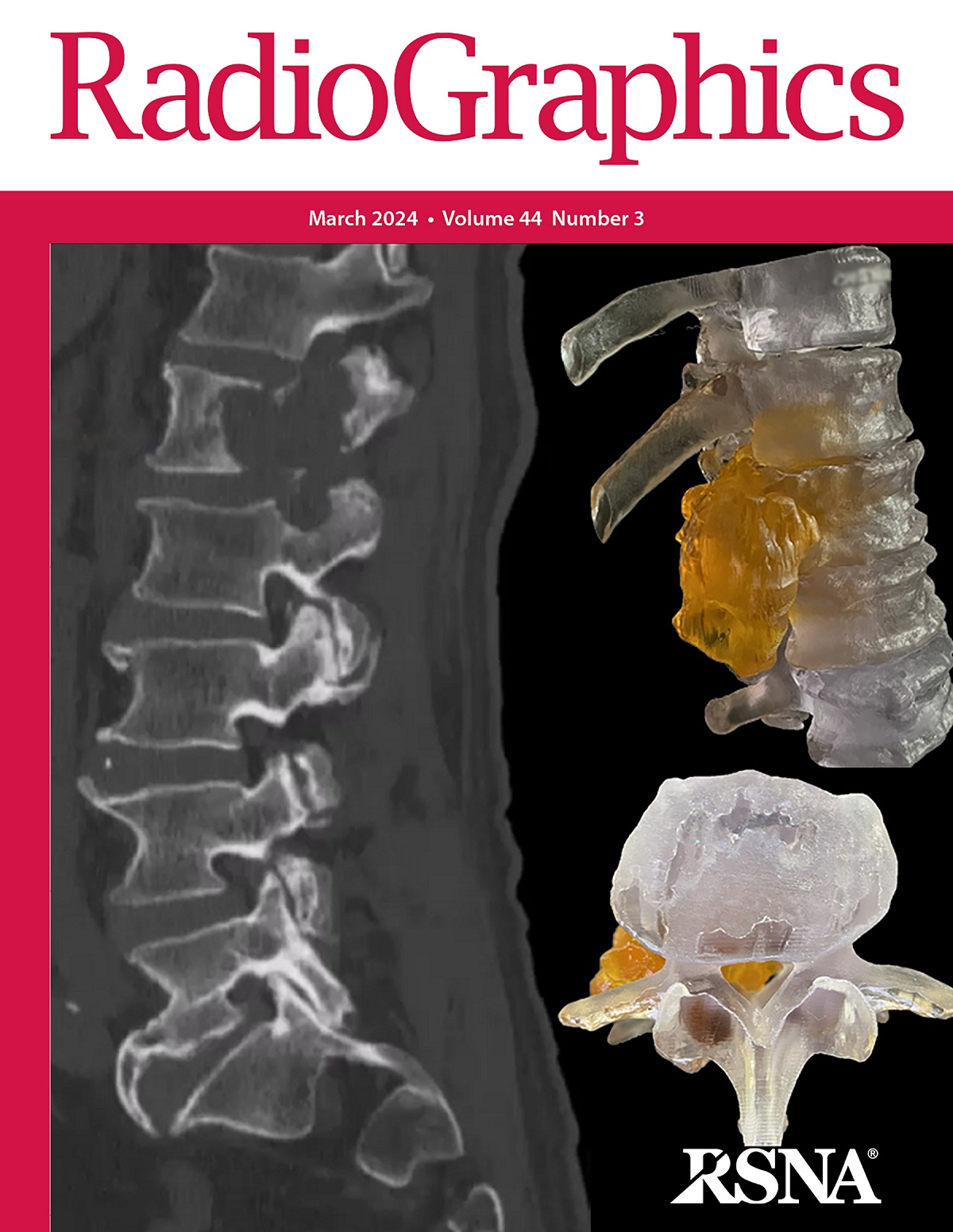求助PDF
{"title":"Intra-articular Osteoid Osteomas: Imaging Manifestations and Mimics.","authors":"M Alejandra Bedoya, Jade Iwasaka-Neder, Andy Tsai, Sarah D Bixby","doi":"10.1148/rg.230208","DOIUrl":null,"url":null,"abstract":"<p><p>Osteoid osteoma (OO) is the third most prevalent benign bone neoplasm in children. Although it predominantly affects the diaphysis of long bones, OO can assume an intra-articular location in the epiphysis or the intracapsular portions of bones. The most common location of intra-articular OO is the hip joint. The presentation of intra-articular OOs often poses a diagnostic enigma, both from clinical and radiologic perspectives. Initial symptoms are often vague and nonspecific, characterized by joint pain, stiffness, and limited range of motion, which frequently contributes to a delayed diagnosis. Radiographic findings range from normal to a subtle sclerotic focus, which may or may not have a lucent nidus. In contrast to their extra-articular counterparts, intra-articular lesions have distinct features at MRI, including synovitis, joint effusion, and bone marrow edema-like signal intensity. While CT remains the standard for identifying the nidus, even CT may be inadequate in visualizing it in some cases, necessitating the use of bone scintigraphy or fluorine 18-labeled sodium fluoride PET/CT for definitive diagnosis. Radiologists frequently play a pivotal role in suggesting this diagnosis. However, familiarity with the unique imaging attributes of intra-articular OO is key to this endeavor. Awareness of these distinctive imaging findings of intra-articular OO is crucial for avoiding diagnostic delay, ensuring timely intervention, and preventing unnecessary procedures or surgeries resulting from a misdiagnosis. The authors highlight and illustrate the different manifestations of intra-articular OO as compared with the more common extra-articular lesions with respect to clinical presentation and imaging findings. <sup>©</sup>RSNA, 2024 Supplemental material is available for this article.</p>","PeriodicalId":54512,"journal":{"name":"Radiographics","volume":"44 7","pages":"e230208"},"PeriodicalIF":5.2000,"publicationDate":"2024-07-01","publicationTypes":"Journal Article","fieldsOfStudy":null,"isOpenAccess":false,"openAccessPdf":"","citationCount":"0","resultStr":null,"platform":"Semanticscholar","paperid":null,"PeriodicalName":"Radiographics","FirstCategoryId":"3","ListUrlMain":"https://doi.org/10.1148/rg.230208","RegionNum":1,"RegionCategory":"医学","ArticlePicture":[],"TitleCN":null,"AbstractTextCN":null,"PMCID":null,"EPubDate":"","PubModel":"","JCR":"Q1","JCRName":"RADIOLOGY, NUCLEAR MEDICINE & MEDICAL IMAGING","Score":null,"Total":0}
引用次数: 0
引用
批量引用
Abstract
Osteoid osteoma (OO) is the third most prevalent benign bone neoplasm in children. Although it predominantly affects the diaphysis of long bones, OO can assume an intra-articular location in the epiphysis or the intracapsular portions of bones. The most common location of intra-articular OO is the hip joint. The presentation of intra-articular OOs often poses a diagnostic enigma, both from clinical and radiologic perspectives. Initial symptoms are often vague and nonspecific, characterized by joint pain, stiffness, and limited range of motion, which frequently contributes to a delayed diagnosis. Radiographic findings range from normal to a subtle sclerotic focus, which may or may not have a lucent nidus. In contrast to their extra-articular counterparts, intra-articular lesions have distinct features at MRI, including synovitis, joint effusion, and bone marrow edema-like signal intensity. While CT remains the standard for identifying the nidus, even CT may be inadequate in visualizing it in some cases, necessitating the use of bone scintigraphy or fluorine 18-labeled sodium fluoride PET/CT for definitive diagnosis. Radiologists frequently play a pivotal role in suggesting this diagnosis. However, familiarity with the unique imaging attributes of intra-articular OO is key to this endeavor. Awareness of these distinctive imaging findings of intra-articular OO is crucial for avoiding diagnostic delay, ensuring timely intervention, and preventing unnecessary procedures or surgeries resulting from a misdiagnosis. The authors highlight and illustrate the different manifestations of intra-articular OO as compared with the more common extra-articular lesions with respect to clinical presentation and imaging findings. © RSNA, 2024 Supplemental material is available for this article.


